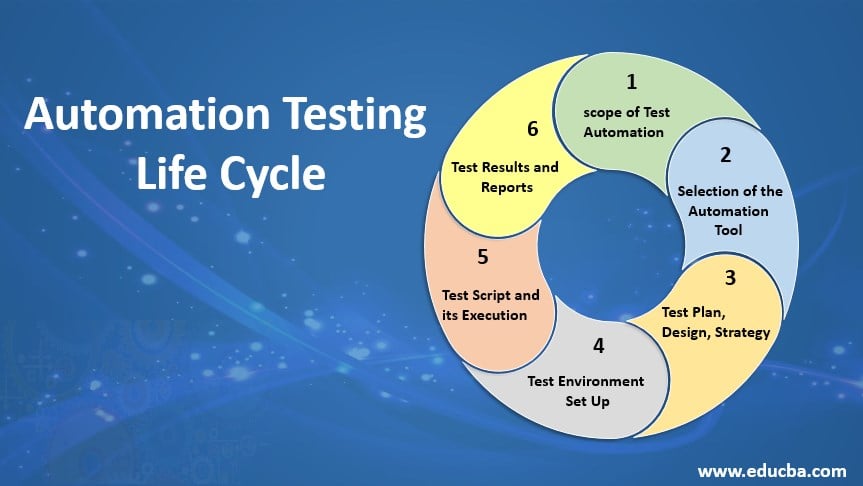How Automation Testing Revolutionizes Quality Control Processes
How Automation Testing Revolutionizes Quality Control Processes
Blog Article
From Handbook to Automated Testing: A Comprehensive Overview to Transitioning Smoothly and Effectively
In the realm of software application testing, the change from guidebook to automated processes has actually ended up being a significantly essential change for companies seeking to boost efficiency and precision in their testing methods. As modern technology remains to development, the demand for smooth and reliable automated screening techniques has actually never ever been a lot more important. The trip from guidebook to automated testing is not without its difficulties, but when approached strategically and with a clear strategy in mind, the benefits can be considerable - automation testing. In this thorough overview, we will certainly check out essential actions and considerations crucial for a successful change, from the preliminary selection of devices to the combination of automation into existing process. Stay tuned to reveal the insights that will certainly assist lead the way for a smoother and extra efficient testing procedure.
Benefits of Automated Evaluating
Automated testing offers countless advantages, enhancing performance and precision in software application growth processes. Automated examinations can be run all at once on numerous tools and operating systems, drastically speeding up the testing phase compared to hand-operated screening.
Additionally, automated screening makes certain a higher level of precision in detecting flaws. Consistency in testing is also improved, as automated examinations carry out the very same steps specifically each time they are run.
Picking the Right Tools

First of all, analyze your requirements and goals. Recognize the extent of your project, the innovations involved, and the ability collection of your team. This analysis will certainly aid you establish the abilities and features you require in your screening devices.
Second of all, consider the compatibility of the tools with your existing processes and systems. Seamless assimilation with your current software growth lifecycle is necessary to make sure a smooth transition to automation.
In addition, examine the scalability and versatility of the tools. As your testing requires progress, the devices must have the ability to adjust and accommodate modifications efficiently.
Lastly, consider the support and area around the tools. When applying automated testing, durable support and an energetic customer community can provide useful resources and help. By meticulously thinking about these elements, you can choose the right tools that align with your demands and set the phase for a successful shift to automated testing.
Writing Reliable Examination Scripts

When crafting test manuscripts, it is necessary to consider the specific demands of the software application being checked and make certain that the manuscripts address all vital capabilities. Detailed and clear naming conventions for test manuscripts and examination situations can improve readability and maintainability. Additionally, incorporating error handling mechanisms within the test manuscripts can assist in determining and attending to concerns without delay.
Moreover, arranging test scripts right into modular parts can improve reusability and scalability, minimizing redundancy and improving effectiveness in test manuscript maintenance. Regular reviews and updates to evaluate scripts are vital to maintain speed with evolving software program requirements and capabilities. By complying with these principles, testers can produce robust and effective test manuscripts that contribute significantly to the success of automated screening procedures.
Integrating Automation Into Workflows
By seamlessly incorporating automated screening tools like Selenium or Appium into the software growth lifecycle, groups can achieve faster responses on code changes, leading to quicker bug detection and resolution. This assimilation enables for continual testing throughout the growth process, making sure that any type of issues are recognized early on, resulting in greater software application top quality. Proper assimilation of automation devices requires cooperation in between click resources growth, screening, and operations groups to develop a unified operations that maximizes performance and efficiency in delivering premium software application items.
Guaranteeing a Smooth Shift
Successfully transitioning to automated testing includes precise planning and mindful execution to optimize and lessen disruptions effectiveness in the software application development process - automation testing. To make sure a smooth change, it is vital to begin by conducting a thorough analysis of the present testing processes and determining locations where automation can bring the most considerable advantages. Involving with all stakeholders beforehand at the same time, consisting of designers, testers, and project managers, is vital for garnering assistance and buy-in for the automation effort
Interaction is key during this change phase. Clear interaction of the goals, benefits, and assumptions of automated testing helps to important site handle any kind of resistance or concerns that may arise. Additionally, offering ample training and resources for staff member to upskill in automation devices and techniques is vital for making certain an effective change.

Conclusion
Finally, transitioning from handbook to automated testing uses numerous benefits, consisting of increased efficiency and dependability. By picking the suitable devices, creating reliable examination manuscripts, and integrating automation flawlessly right into workflows, organizations can make certain a smooth and effective change. It is necessary to embrace automation as an important asset in software program testing processes to boost total top quality and efficiency.
In the world of software program testing, the change from manual to automated processes has become a progressively important change for companies seeking to enhance efficiency and accuracy in their screening techniques. Automated tests can be run at the same time on multiple devices and running systems, considerably speeding up the screening stage compared to manual screening. Uniformity in screening is also improved, as automated examinations implement the very same steps exactly each time they are run.To guarantee the successful application of picked testing devices, the creation of effective examination manuscripts plays a vital role in verifying the functionality and efficiency of automated procedures - automation testing. By following these concepts, testers can create robust and efficient test manuscripts that add dramatically to the success of automated screening processes
Report this page